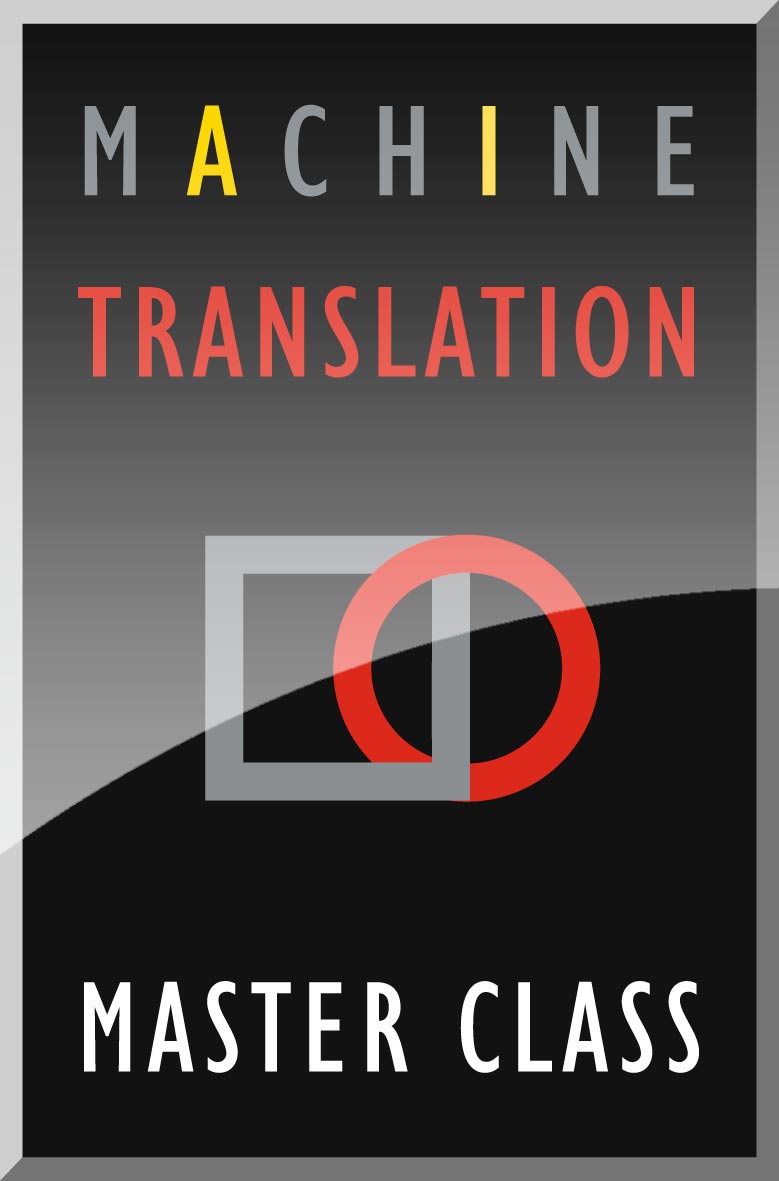Machine Translation Master Course Newsletter – Issue 3

As the Instructor for the Machine Translation Master Class from The Localization Institute, I am very happy to continue to share with you my ideas about the relationship between humans and machines. In this issue, we will focus on the role of humans in an MT deployment process, in which there are three key players, namely, project managers, linguists, and MT suppliers.
Project managers: how good can you leverage machine power?
As we grow our company, we are also growing our linguistic assets such as terminology and translation memory. When our language data have increased greatly in quantity and quality, it is very natural that we are thinking of more ways to leverage our resources, and of course, one of the best ways is to apply them to a machine translation system. As a result, we are bringing a new player into the field, who is so different from us.
As the manager of the whole team, it makes much more sense that you have a better knowledge of this new player and also help other team members understand how to work with it in the MT deployment process. This is not easy, as machines break the existing balance of your workflow, including how and what you need to communicate with your team members, your colleagues in other departments, your clients, your LSPs, and last but not least, your MT suppliers. It is indeed challenging but interesting to manage this dynamic situation. To this end, possessing the most relevant knowledge of machine translation and data management is a must. It helps you make plans to meet the needs and expectations from both humans and machines.
Linguists: a “translation system” to be compared with MT systems?
As a translator, at some point, if you happen to find yourself being evaluated with some MT systems, don’t panic or feel bitter. Behind machines, there is such a “collective
wisdom” obtained from millions or billions of language use cases by people. The amount of data an MT engine can process within a short period of time might be greater than what a human translator can process in his or her whole life. It is not surprising if you win or lose this game. This cannot change the fact that each individual is a unique existence of this world.
In a more practical sense, it might be a good idea that we start to think about how to make use of what you are good at and which direction we shall move in. This situation exists not only in the language industry, but for each and every profession. I envision there will be a time when personalized MT engines become a feasible option for each linguist, who will give purposes and meanings to these MT “translators”, guiding them to better represent human experiences. Humans will be focusing on the coordination and the leadership role in an MT implementation process. Ultimately it is humans who are the end-users of technology, be it human-guided tools or machine learning tools. Machines represent extended intelligence of humans. They are about humans, about every one of us. That is the reason why we are drawn to them.
MT suppliers: how good can you meet client needs?
For an MT supplier, it is not surprising that a client asks you many questions that you might feel outside of the territory of machine translation, as MT systems integrated aspects of other language technologies, such as segmenting, terminology, and translation memory. While these could be exciting new business opportunities, an MT supplier should be able to understand client needs and decide on your level of involvement based on your own business priorities and resources, from just offering MT interface, methodology and technological support, to MT customization, and to offering the whole package including MT engines, linguists and QA services.
No matter what, a key foundation is to build trust with your collaborators. For many people, an MT engine is like a black box and what usually matters to other human players, including clients, project managers and linguists, is transparency and fairness. Working in a machine learning environment often means the same resources will be shared by both humans and machines. MT deployment can be machine oriented or human oriented. Having a fair and transparent approach will help all stakeholders plan for both human learning and machine learning.
Takeaways:
- Traditional localization workflow will be updated with MT as a new player
- MT systems help human translators explore their internal language model
- MT suppliers need to build trust with other human players
If you want to know more about machine translation, sign up for our next Machine Translation Master Class.
Disclaimer: Copyright © 2021 The Localization Institute. All rights reserved. This document and translations of it may be copied and furnished to others, and derivative works that comment on or otherwise explain it or assist in its implementation may be prepared, copied, published, and distributed, in whole or in part, without restriction of any kind, provided that the above copyright notice and this section are included on all such copies and derivative works. However, this document itself may not be modified in any way, including by removing the copyright notice or references to The Localization Institute, without the permission of the copyright owners. This document and the information contained herein is provided on an “AS IS” basis and THE LOCALIZATION INSTITUTE DISCLAIMS ALL WARRANTIES, EXPRESS OR IMPLIED, INCLUDING BUT NOT LIMITED TO ANY WARRANTY THAT THE USE OF THE INFORMATION HEREIN WILL NOT INFRINGE ANY OWNERSHIP RIGHTS OR ANY IMPLIED WARRANTIES OF MERCHANTABILITY OR FITNESS FOR A PARTICULAR PURPOSE.




